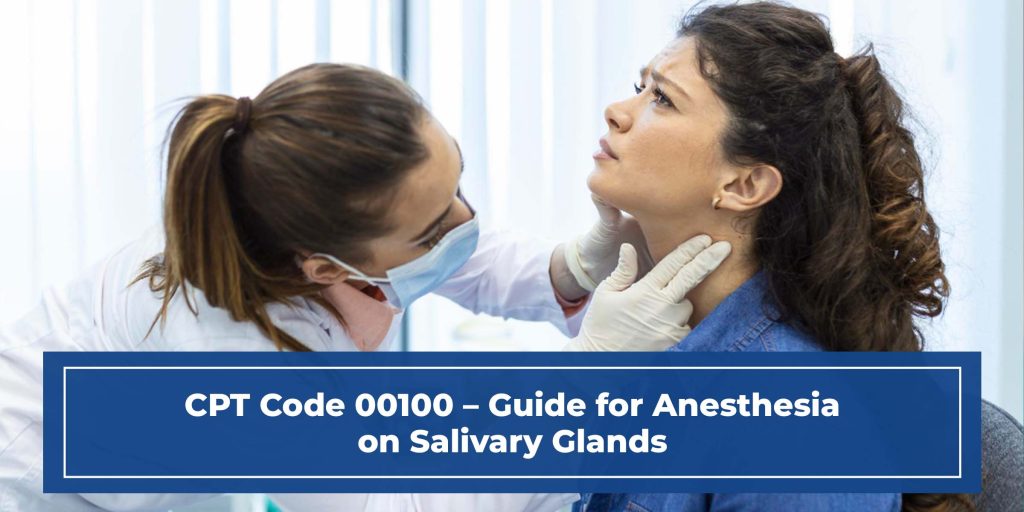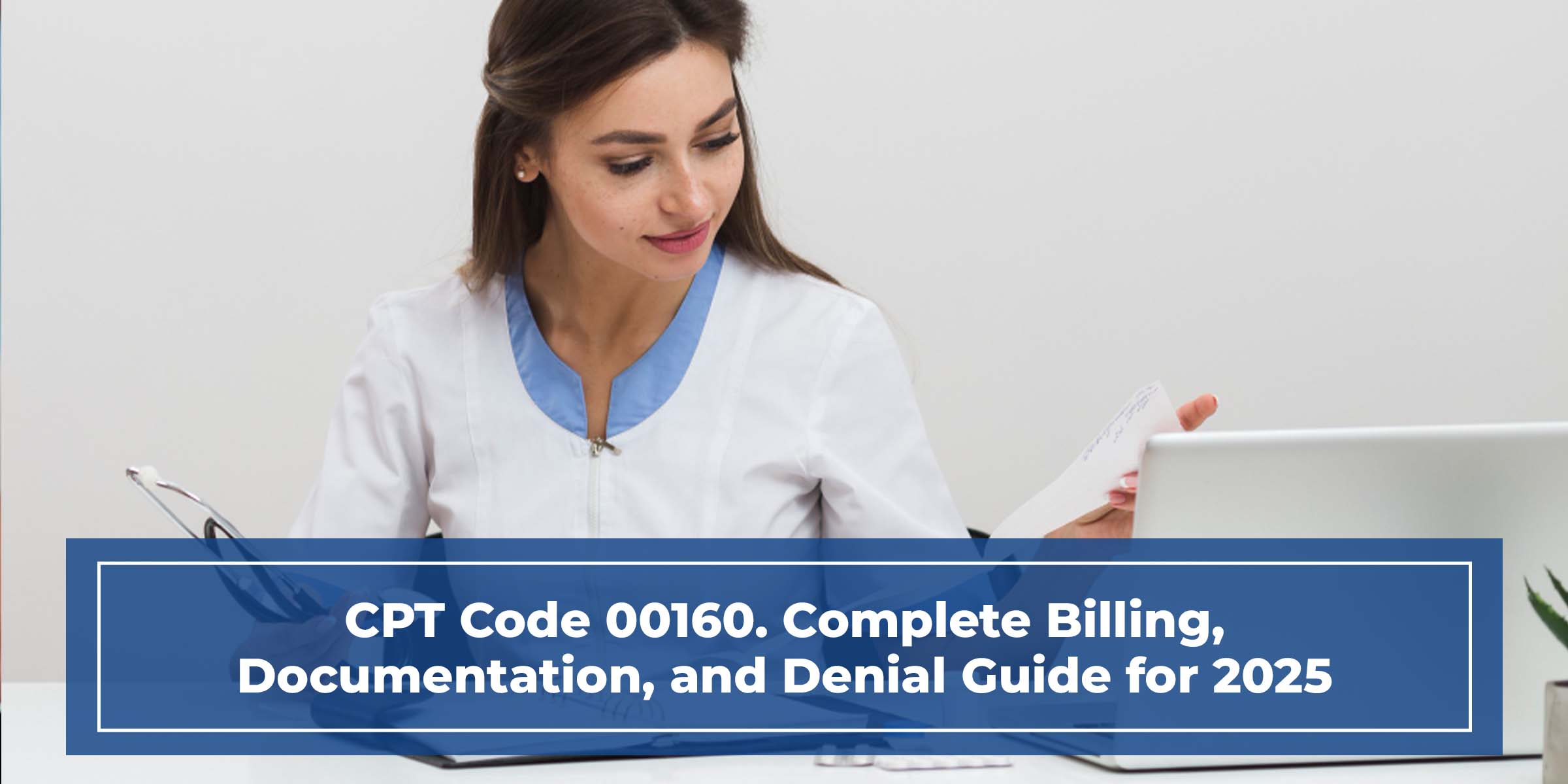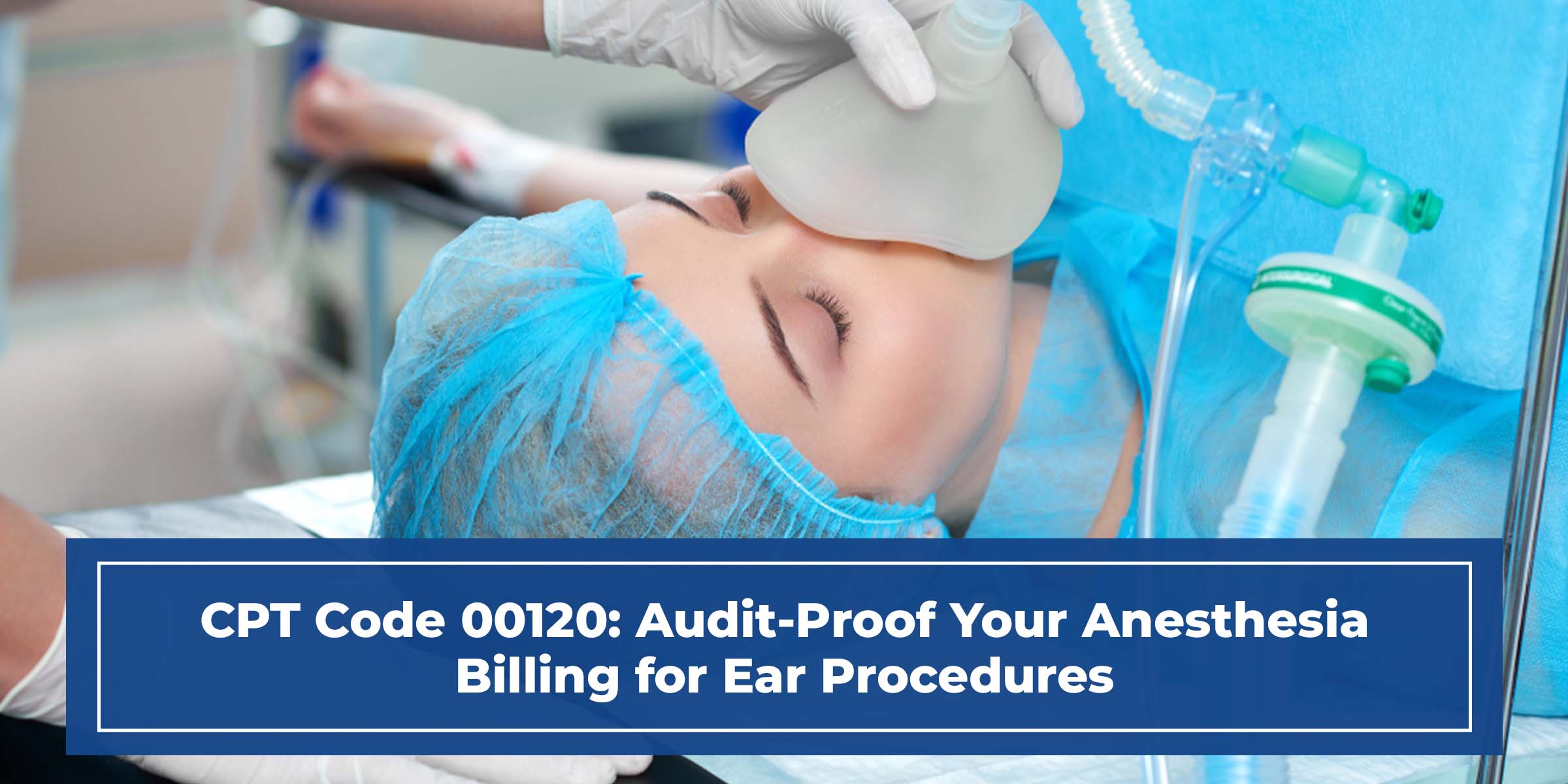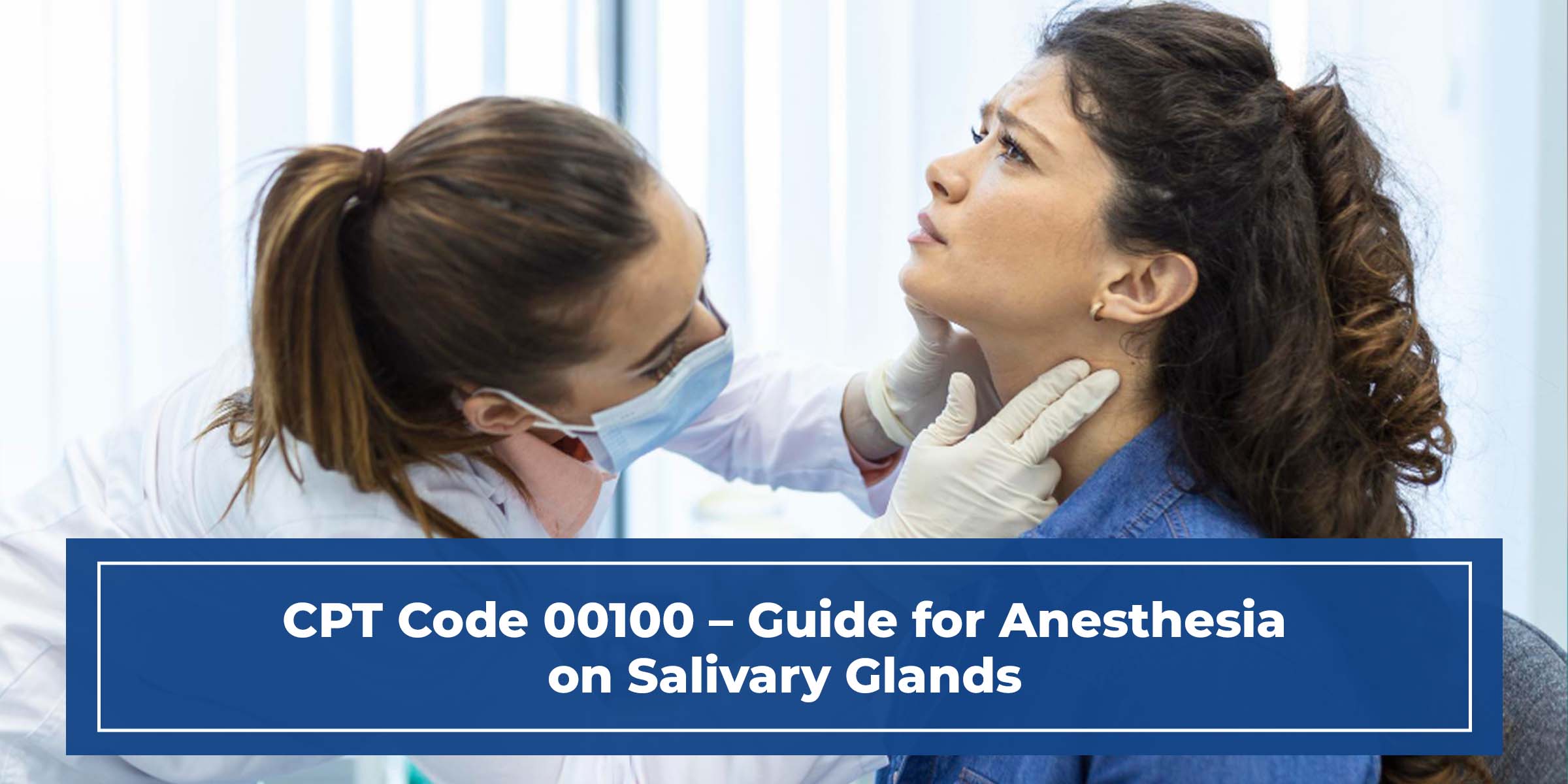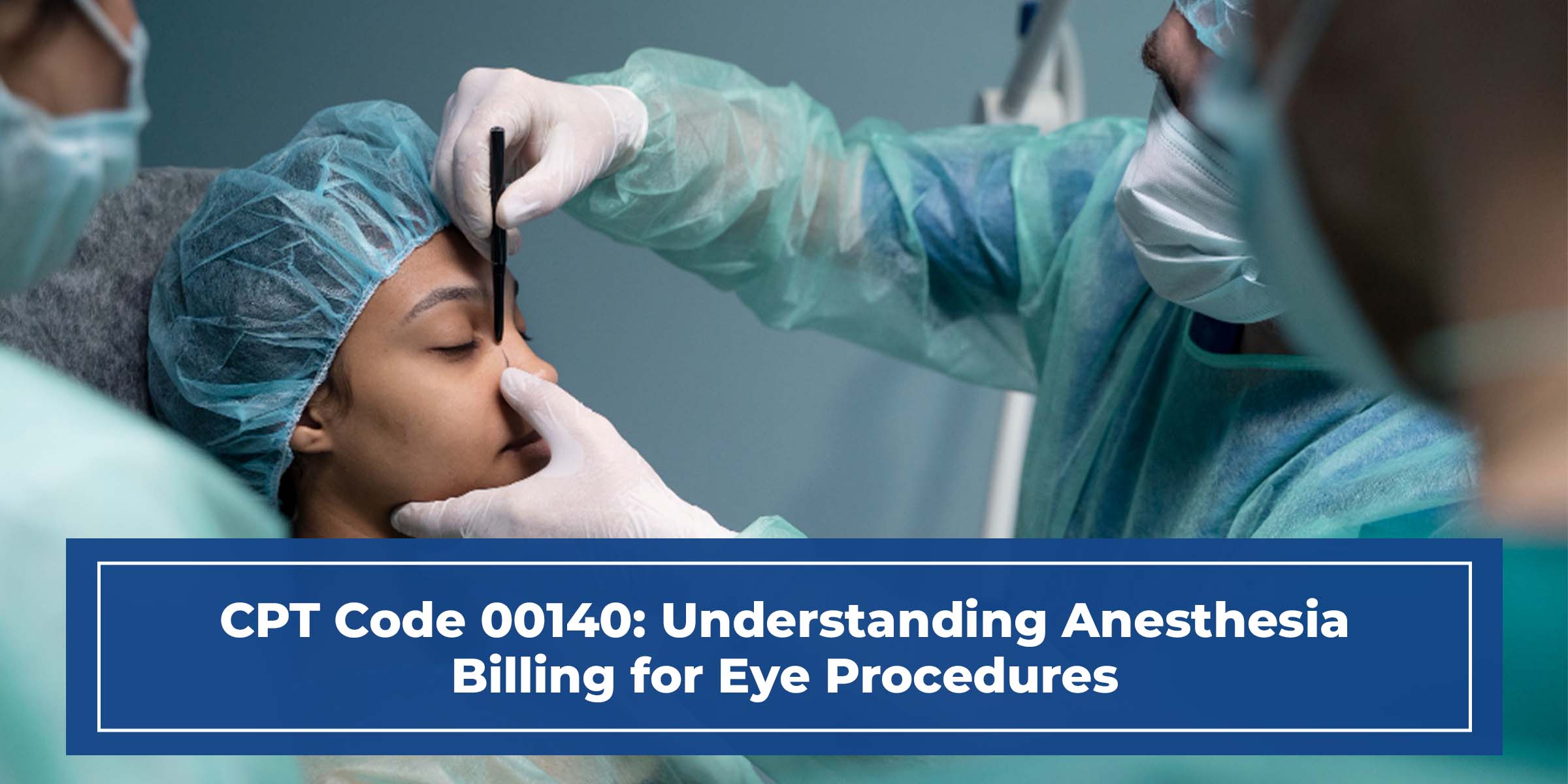Overview: Why CPT 00100 Deserves More Than Just a Code Lookup
CPT code 00100 is used to report anesthesia services for procedures on the salivary glands, including biopsies. While it may appear simple on paper, coding and billing this service correctly involves multiple layers of decision-making—from accurate time documentation to modifier assignment, ICD-10 pairing, and payer-specific expectations.
Professionals in anesthesia billing know this: missing a single detail with CPT 00100 can reduce allowed reimbursement by 30% or trigger denials that delay payment by weeks.
This blog is not a surface-level definition. It is a comprehensive 360° view of the code, written for billing experts, anesthesia practices, CRNAs, and compliance teams.
What Does CPT Code 00100 Cover?
CPT 00100 is defined as:
Anesthesia for procedures on salivary glands, including biopsy
This applies to:
- Excision of the parotid, submandibular, or sublingual glands
- Biopsies, either needle or open
- Exploratory or therapeutic interventions involving the gland ducts
- Surgeries requiring general, MAC, or deep regional anesthesia
Note: This code does not apply to minor procedures performed under local anesthesia or conscious sedation unless there’s a clinical justification (see Modifier 23 below).
Reimbursement Calculation: The Real Equation Behind Payment
Anesthesia billing doesn’t use the standard E&M valuation model. It follows this structure:
(Base Units + Time Units + Modifying Units) × Conversion Factor = Reimbursement
Base Units (Fixed)
CPT 00100 is assigned 4 base units by the ASA and CMS.
Time Units (Variable)
Measured in 15-minute increments. Time starts with pre-anesthesia assessment and ends when care is handed over post-op.
- 45 minutes = 3 time units
- 60 minutes = 4 time units
Modifying Units
These come from physical status modifiers and occasionally from additional complexity.
- P1 = 0 units
- P3 = +1 unit
- P5 = +3 units
Example Calculation
Let’s say:
- Anesthesia time = 60 minutes (4 time units)
- Physical status = P3 (1 unit)
- Total units = 4 base + 4 time + 1 status = 9 units
- MAC Conversion Factor (New Jersey 2025) = $21.51
Total Expected Payment = 9 × 21.51 = $193.59
Always verify conversion factors using your locality-specific MAC or payer contract.
Avoid Denials With Correct Modifier Use on CPT 00100
Most anesthesia billing issues with this code are tied to modifiers. Missing, misused, or mismatched modifiers often trigger payer denials or lead to bundled claims.
Common Billing Modifiers
| Modifier | Purpose |
| AA | An anesthesiologist personally performed |
| QZ | CRNA without medical direction |
| QX | CRNA with medical direction by a physician |
| QY | One CRNA medically directed by one anesthesiologist |
| QK | Anesthesiologist directing 2–4 concurrent procedures |
| QS | Monitored Anesthesia Care (MAC) |
Physical Status Modifiers (P1–P6)
Impact unit count and risk assessment. These must match what’s documented in the anesthesia record.
Other Modifiers You May Need
| Modifier | Use Case |
| 23 | Unusual anesthesia for a procedure typically done under local |
| 76/77 | Repeat the procedure by the same or a different provider |
| 78/79 | Return to OR or unrelated procedure during post-op period |
Never use modifier 47 (anesthesia by surgeon) for 00100. This code applies only to services administered by an anesthesia provider.
Denial Prevention: High-Risk Areas You Must Master
Here’s where real-world billing issues show up most often for CPT 00100:
| Issue | Why It Occurs | How to Prevent It |
| No modifier attached | Payer can’t determine provider role | Use QZ, QX, or AA appropriately |
| Incorrect time logging | Anesthesia time not documented or rounded | Log exact start and stop in minutes |
| ICD-10 mismatch | Diagnosis doesn’t justify anesthesia | Map to correct gland pathology |
| Concurrency oversight | No documentation of supervision | Keep concurrency logs for QK/QY/QX |
| MAC without QS | No MAC indication on the claim | Append QS for monitored anesthesia |
Diagnosis Code Compatibility (ICD-10 Mapping)
Anesthesia services must be supported by medically necessary diagnosis codes. CPT 00100 is usually linked to:
- K11.0 – Atrophy of salivary gland
- K11.2 – Sialoadenitis
- K11.8 – Other diseases of salivary glands
- D11.0 – Benign neoplasm of parotid gland
- C08.0–C08.9 – Malignant neoplasms of major salivary glands
Avoid using vague symptoms like:
- R68.84 – Jaw pain
- K14.0 – Glossitis
Unless they’re directly tied to the gland procedure documented in the operative note.
Payer Rules and Reimbursement Trends
Medicare (MAC Guidelines)
- Base units and conversion factors follow CMS charts
- Time must be precise (HHMM format preferred)
- P status must be documented in the record
Private Payer Variability
| Payer | Common Reimbursement Rules |
| UHC | MAC anesthesia requires supporting documentation, even with QS |
| Aetna | Requires surgeon’s report if anesthesia seems excessive |
| Cigna | Will deny 00100 if diagnosis only shows inflammation or non-specific symptoms |
| WellCare | Rejects QZ if not authorized for CRNA in plan-specific policies |
Documentation Protocols That Improve First-Pass Rates
- Start and stop times: Exact to the minute
- Provider logs: Supervision status and names
- Physical status: P modifier with justification
- Procedure notes: Type of anesthesia clearly stated (MAC, general, etc.)
- Billing summary: Unit calculation breakdown in EMR or billing software
Linking Expertise with Results
When anesthesia services are the primary specialty, accuracy in CPT coding, time tracking, and modifier strategy are not optional—they’re revenue-critical.
This is where our internal anesthesia billing workflows stand out. The anesthesia billing services offered through Vigilant Medical Group include modifier validation, concurrency logging, and MAC-based rate optimization—designed specifically to prevent denials on codes like 00100.
Key Takeaways for 00100 Billing
- CPT 00100 is not just a code for anesthesia on salivary glands—it’s a layered service with high denial risk
- Correct time units, modifiers, and diagnosis pairings are essential
- Medicare and commercial payer rules vary—know your contracts
First-pass clean claims depend on clinical and billing documentation being in sync
